Last Updated on August 14, 2023 by Ctybr67k
Four Berlin Squares: here’s our idea for a walk which takes in four squares in what was East Berlin. They include everything from baroque splendour to the ultra-modern, via memories of East Germany. We’ve covered them below in the order that makes historical sense, but geographically you’d be better starting at Alexanderplatz, then going down Unter den Linden and cutting through Bebelplatz to Gendarmenmarkt. From there it’s a slightly longer walk to Potsdamer Platz, or a 2 stop U Bahn journey west from ‘Stadmitte’. Take Line 2 in the direction of Ruhleben.
Gendarmenmarkt
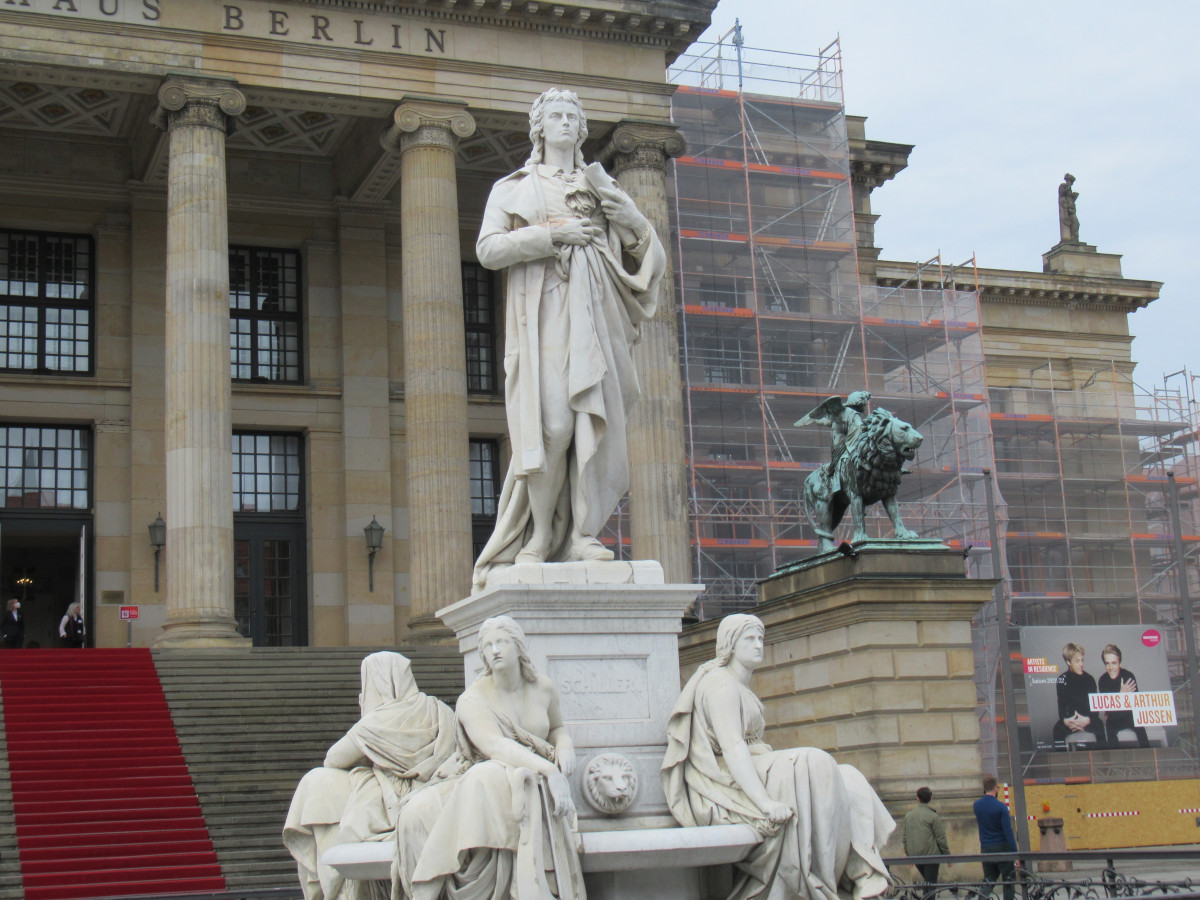
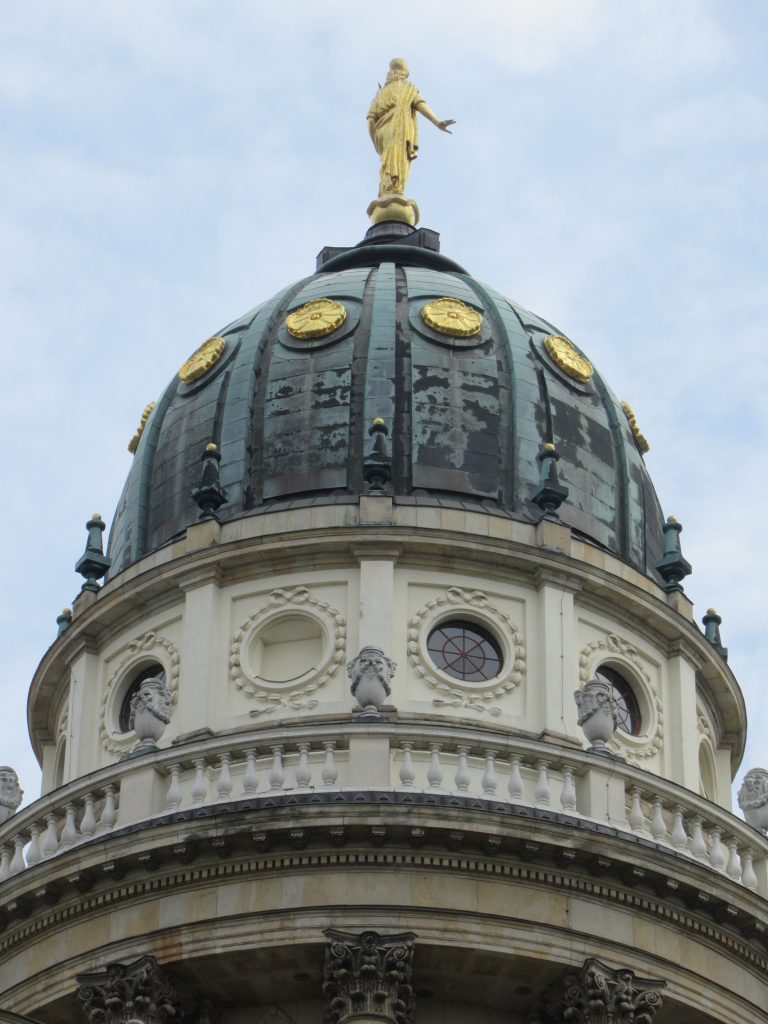
Often called Berlin’s prettiest square, it is bookended by two splendid cathedrals and its centrepiece is the imposing Konzerthaus. The French Cathedral, built by Frederick the Great to make the French Huguenots who settled in Berlin in the 1690s feel welcome, is worth a visit. Inside, it’s beautiful in an understated, protestant way and you can admire its splendid organ – often played for public concerts – climb its dome and visit the little museum telling the story of the Huguenots. The German Cathedral is more of interest to keen politicos – it’s been de-consecrated and is now home to a very detailed exhibition on German democracy.
Definitely climb the imposing stairs up to the middle of the Konzerthaus, which is often open for visits. It hosted the premier of Beethoven’s 9th Symphony in 1826, a piece played again at the 1989 Berlin Celebration Concert to mark the fall of the wall. Give Schiller a wave on your way past – that’s his statue in the middle of the square. One of Germany’s most famous classical authors, he fell foul of the Nazis, who removed the statue to open up the square for military marching. But now he’s back. The square was badly damaged in wartime bombing, but has been faithfully reconstructed, a story told mainly in music and pictures in this 2 minute video.
Bebelplatz


Another baroque beauty, Bebelplatz was part of Frederick the Great’s grand design for transforming this area of Berlin into what he planned to call the Forum Fridericianum after ….. himself! Back in his day, up to a thousand carriages would line up here waiting to take opera-goers home at the end of the evening. The St Hedwig’s Cathedral – called the upside-down coffee cup by Berliners – was also part of Frederick’s project, but today the main reason to visit Bebelsplatz is to remember the Nazi book-burning which took place here in 1933.
On May 10th, members of the National German Student Association raided the nearby libraries, collecting all the books by authors to whom the Nazis were ideologically opposed – hundreds of novelists, philosophers and scientists, in fact most of the best German thinkers from several centuries. The memorial is a glass plate, set into the cobbled paving, through which you can look down on to vast empty bookshelves big enough to hold the 20,000 volumes which went up in flames that night. Next to it is a brass plaque with a quotation from Heinrich Heine, written more than a century earlier, but frighteningly prescient, given the holocaust which was to follow: ‘Where they burn books, they will also ultimately burn people.’
Alexanderplatz
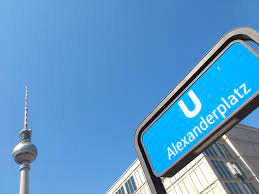


This is the biggest square anywhere in Germany, originally a 19th century military parade ground, then a shopping and transport hub until it was destroyed in World War II and rebuilt as a showpiece square by the East German government. It was here that they held the celebrations for the 25th anniversary of the GDR (German Democratic Republic) in 1974. Also here, in November 1989, 200,000 people gathered to demand a free press, the opening of the country’s borders and the end of the GDR. 5 days later, the Berlin Wall fell.
Today, Alex – as Berliners call it – is a bustling shopping and cultural centre. Look out for the World Clock and the Fountain of Friendship, both built by the East German government, then take the lift to the top of the TV Tower for splendid views of the city. It too was an East German showpiece, designed to be much bigger – of course! – than West Berlin’s Victory Column. When the sun is at a certain angle a cross appears and this, joke Berliners, was the pope’s revenge on secular East Germany.
Just west of the TV Tower is the 13th century St Marienkirche church, where the Totentanz (‘Dance of Death’) frieze, painted in the plague years of the 15th century, will interest those who are not easily spooked. On the other side of the square is the enormous Rotes Rathaus, literally ‘Red Town Hall’, and the Nikolaiviertel, an area of little lanes reconstructed by the East German government to celebrate Berlin’s 750th anniversary in 1987. Think cobbles, olde worlde restaurants, wrought-iron shop signs and the city’s oldest church, the Nikolaikirche.
Potsdamer Platz
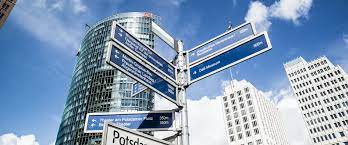
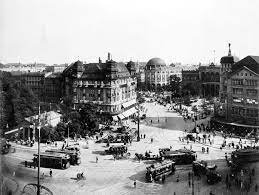
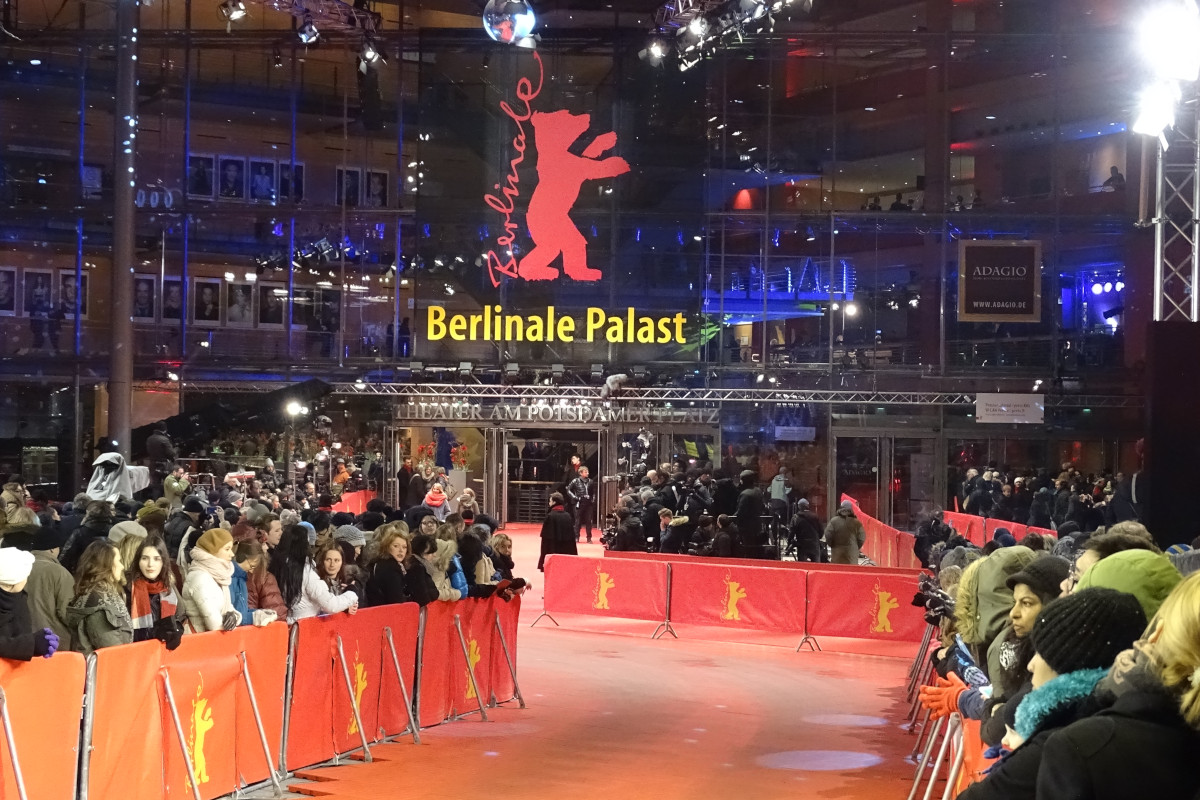
Here, it is harder to see the past because Potsdamer Platz, once the bustling heart of Old Berlin, was destroyed in World War II and when the Berlin Wall went up it ran right through the middle, leaving the area a wasteland until the 1990s. In the early 20th century, Potsdamer Platz was home to embassies, the classiest department stores, the cafes where authors and artists liked to gather and a nightlife to rival Piccadilly Circus in London or New York’s Time Square.
And today? Because the post-war rebuilding took place later here than in the rest of Berlin, the emphasis is much more modern. Potsdamer Platz is more an area than a square, so it can be hard to find your bearings. Head first for the Sony Center, a triumph of concrete and steel where the cafes and shops are all covered by a glass canopy which lights up in bright colours after dark.
Then, seek out the surrounding shopping malls, or the Film Museum. At the Panoramapunkt, Europe’s fastest lift will whisk you 25 floors up to a splendid viewpoint, an exhibition on the history of the area and a café with a distinct 1930s vibe. If you visit in February, you’ll find that Potsdamer Platz is the hub of the Berlinale, ie the Berlin Film Festival, with its visiting stars, red carpets, giant screens and film premieres. An air of excitement pervades and last-minute tickets are sometimes available!
Listen to the podcast
Links for this post
French Cathedral, Gendarmenmarkt
German Cathedral, Gendarmenmarkt
Konzerthaus
Bebelplatz
St Hedwig’s Cathedral
TV Tower
St Marienkirche
Nikolaikirche
Potsdamerplatz
Panoramapunkt
Berlin Film Museum
Berlinale (Berlin Film Festival)
Previous post The Tiergarten and the Ku’damm
Next post Finding World War Two in Berlin today





